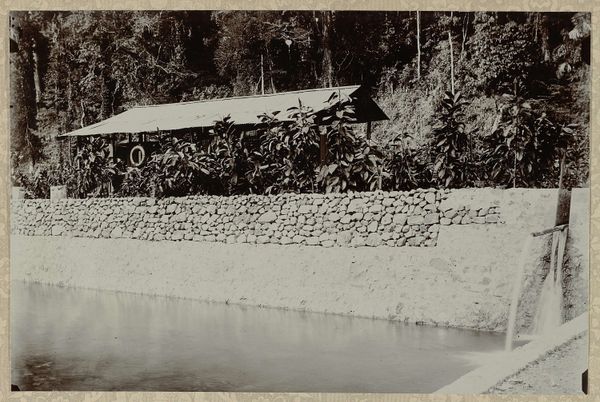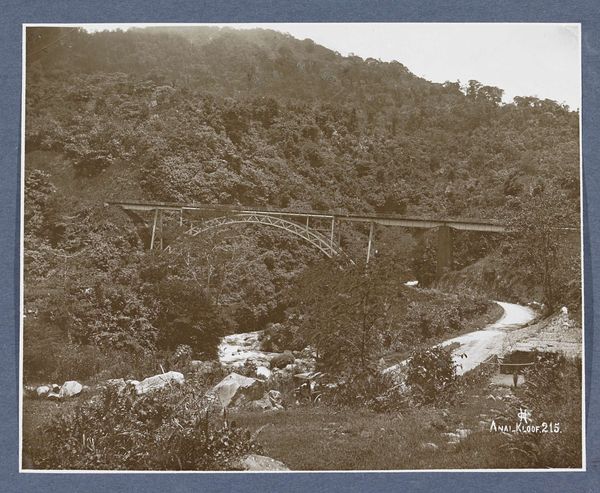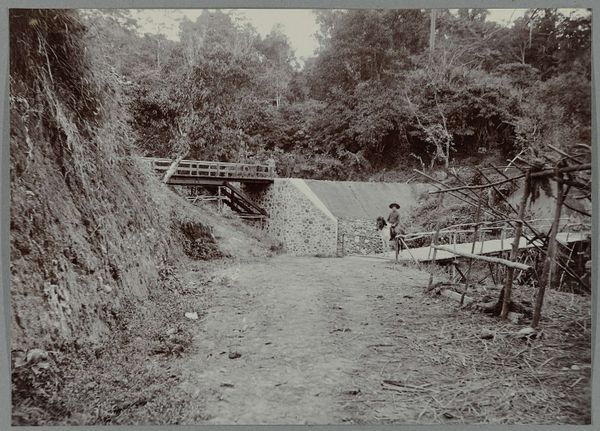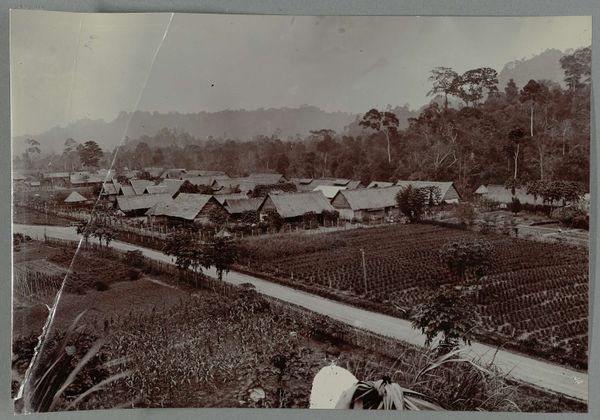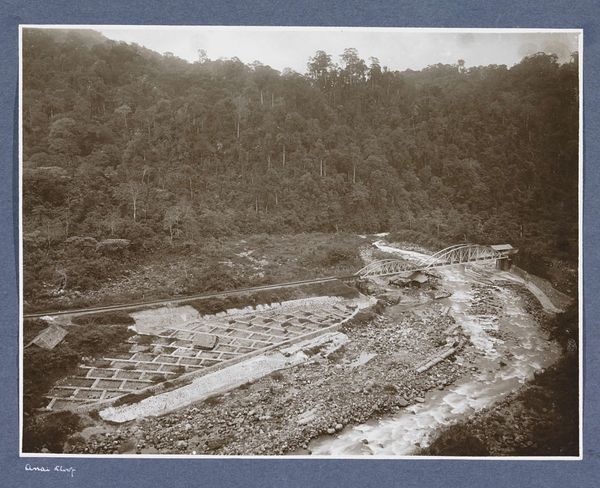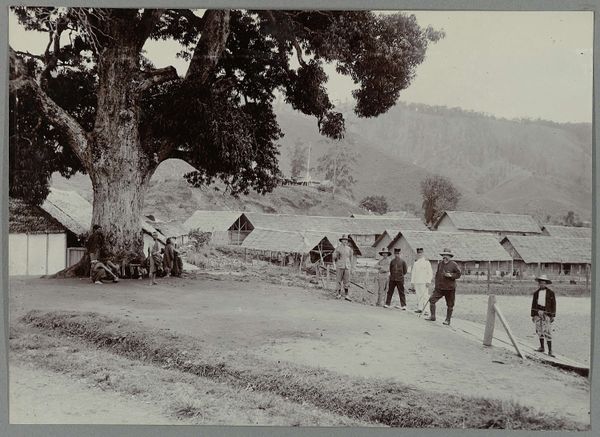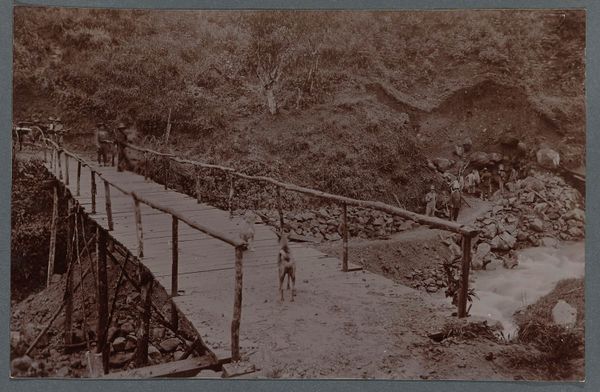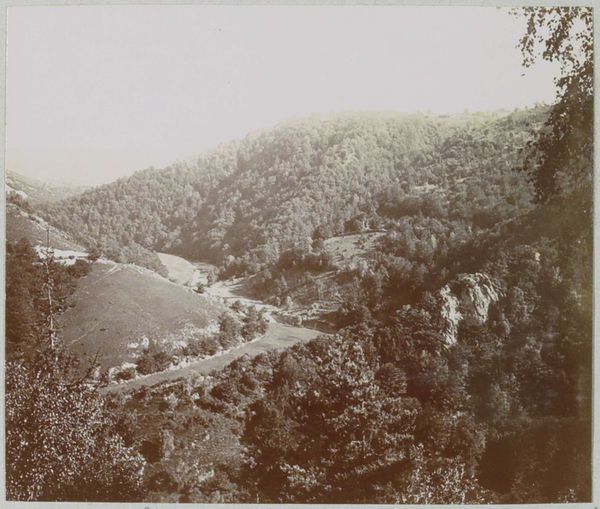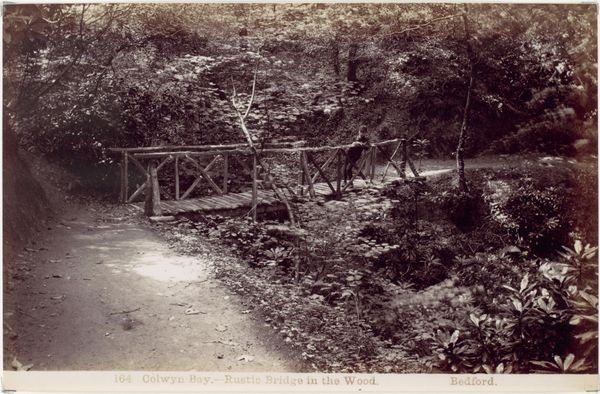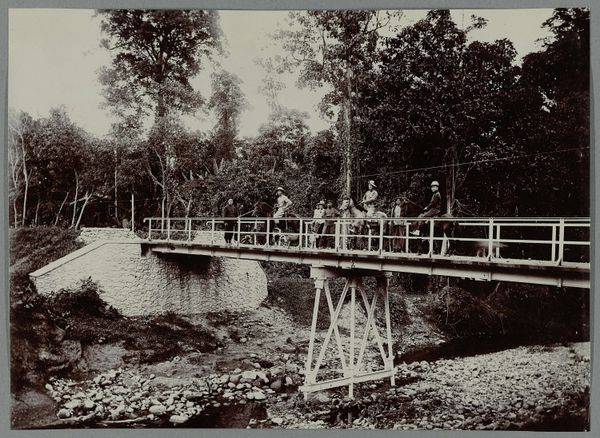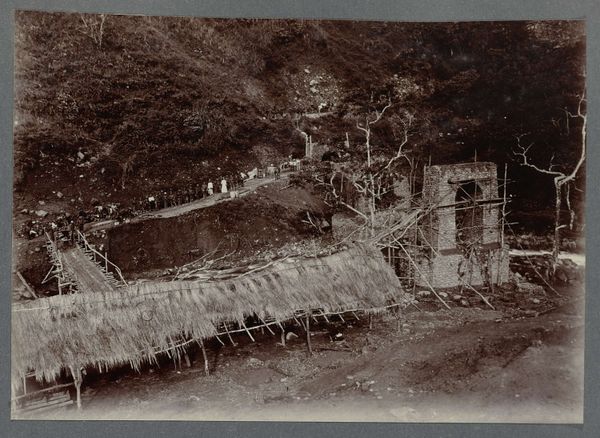
print, plein-air, photography
# print
#
plein-air
#
landscape
#
photography
Dimensions: height 105 mm, width 155 mm
Copyright: Rijks Museum: Open Domain
Curator: Oh, this feels like a lost world! Quiet, reflective, maybe a bit…forgotten. Editor: That's quite a feeling for this "Huizen met een stenen muur met afwatering" which translates to something like "Houses with a stone wall and drainage" and which photographic print dates from between 1903 and 1913. It really places emphasis on structure amidst nature. What do you make of the stark contrast? Curator: Yes, exactly. That wall—it's like a very human attempt to hold back, or contain, the wildness. I get the sense that it symbolizes resilience. There's a person standing by the water—seemingly on a stone ledge as if observing the serene landscape. It suggests a connection to something older and a touch bittersweet. The stillness of the water mirroring everything adds to that effect. Editor: The interplay between architecture and nature highlights a specific moment in colonial landscape design perhaps? The solid construction contrasts with the uncontrolled flora. The buildings aren't ostentatious displays of power, but are perhaps a functional part of an industry like rubber or tea, coexisting alongside native foliage. Curator: That colonial subtext gives another layer of complexity to this landscape. There's something subtly melancholy about this image too. The greyscale, it just intensifies the feeling of time passing, doesn’t it? Editor: Absolutely. The greyscale does flatten time somehow, drawing us into this strange blend of engineering and landscape—a calculated attempt to create a zone separate from the verdant chaos of an unruly territory perhaps. It really illustrates the politics of managing natural resources. Curator: In its time the management of space also played a large role to the composition and aesthetic pleasure, yes? Even the eye seems trained by this perspective—looking across and deeper, framed by what's closer and further in the scene. Editor: Precisely. These kinds of prints helped promote colonial enterprise. "Come see the work that’s being done!". I guess that's part of why I am drawn to the photographic method that allowed artists of that period to go outside their studio and be a sort of reporter and artist combined in one endeavor. Curator: A landscape captured but not necessarily “free,” even in photography itself, hey? What is freedom after all?! Thanks for illuminating the scene for us! Editor: Thank you; It's a striking reminder of how art can speak across eras about landscape, exploitation, and dreams.
Comments
No comments
Be the first to comment and join the conversation on the ultimate creative platform.
